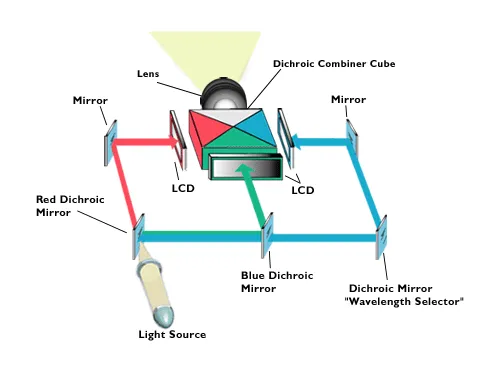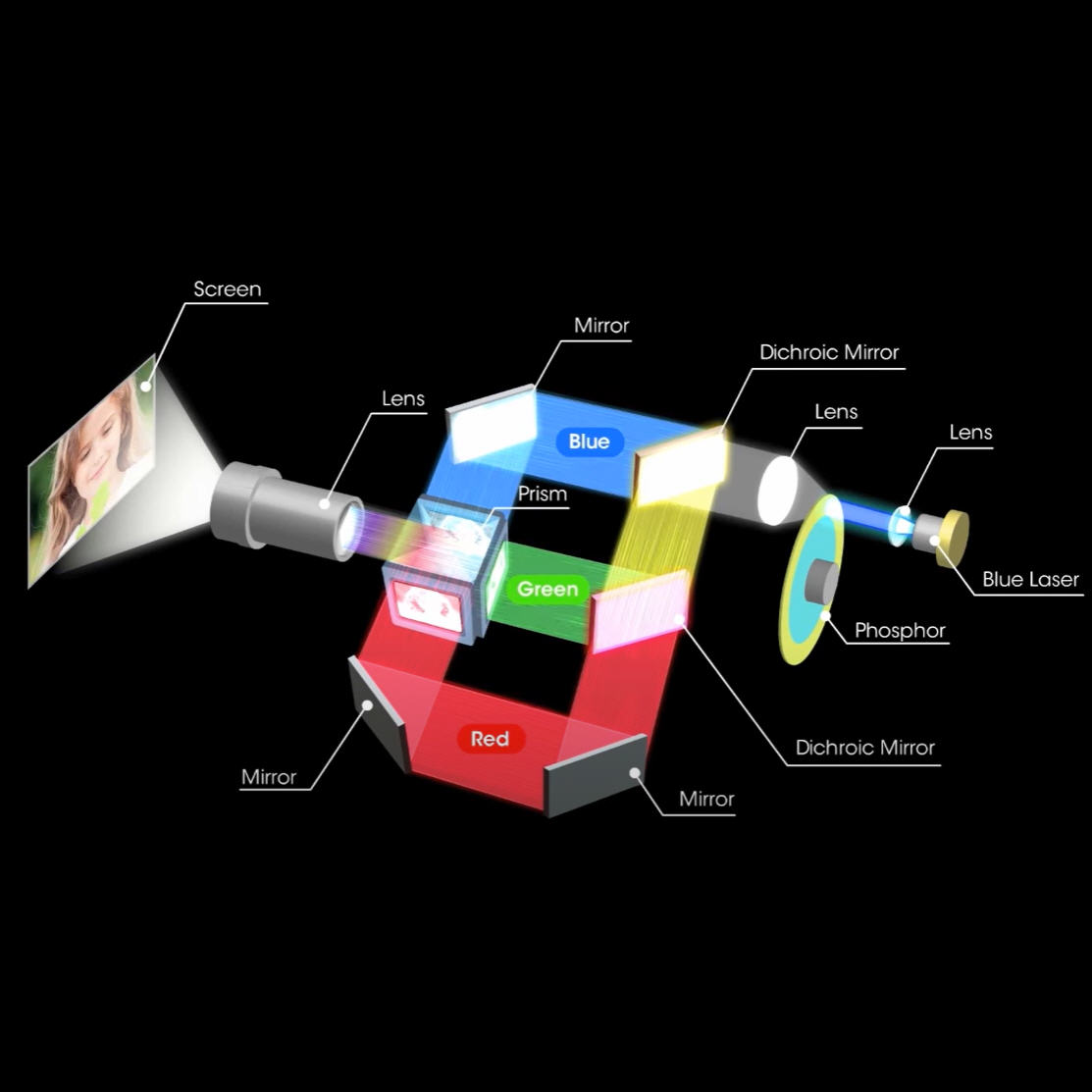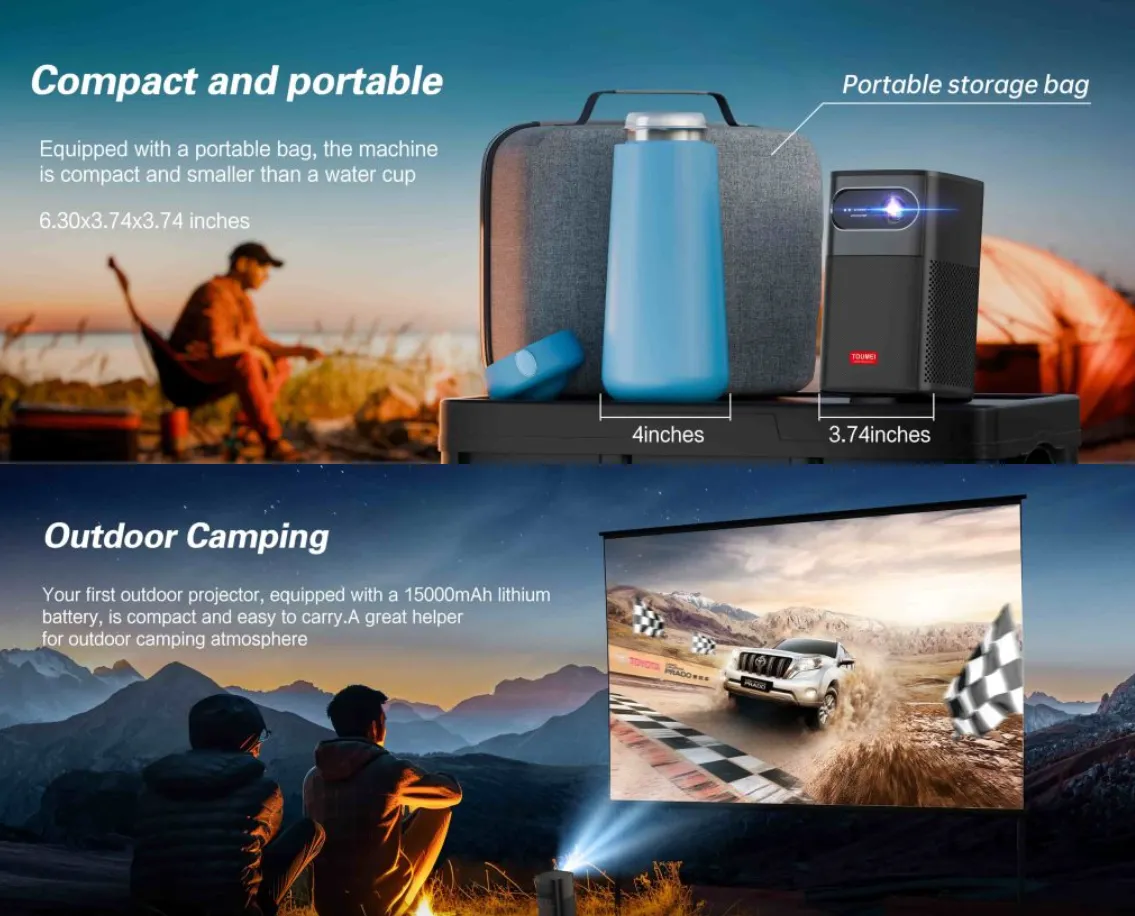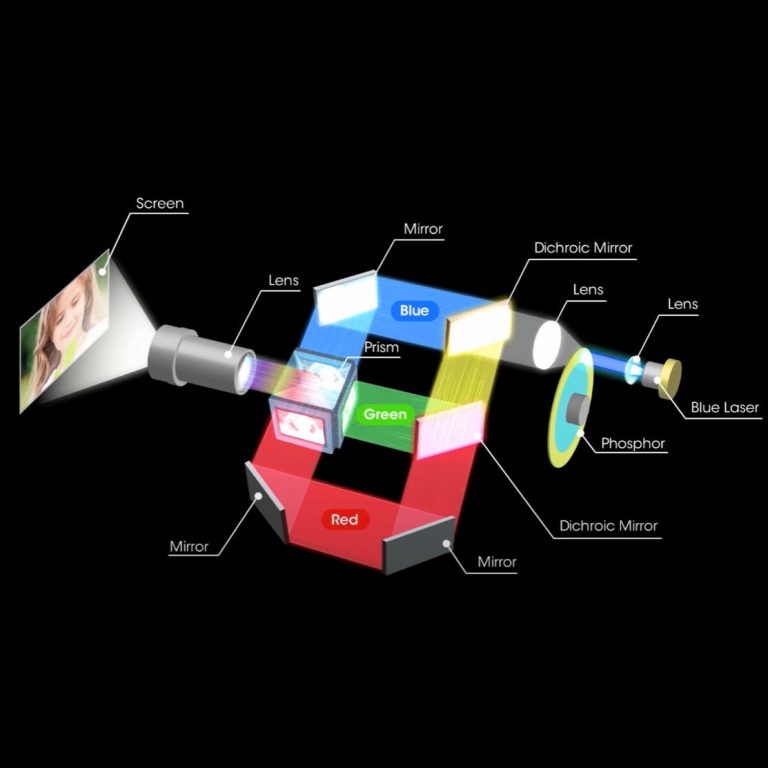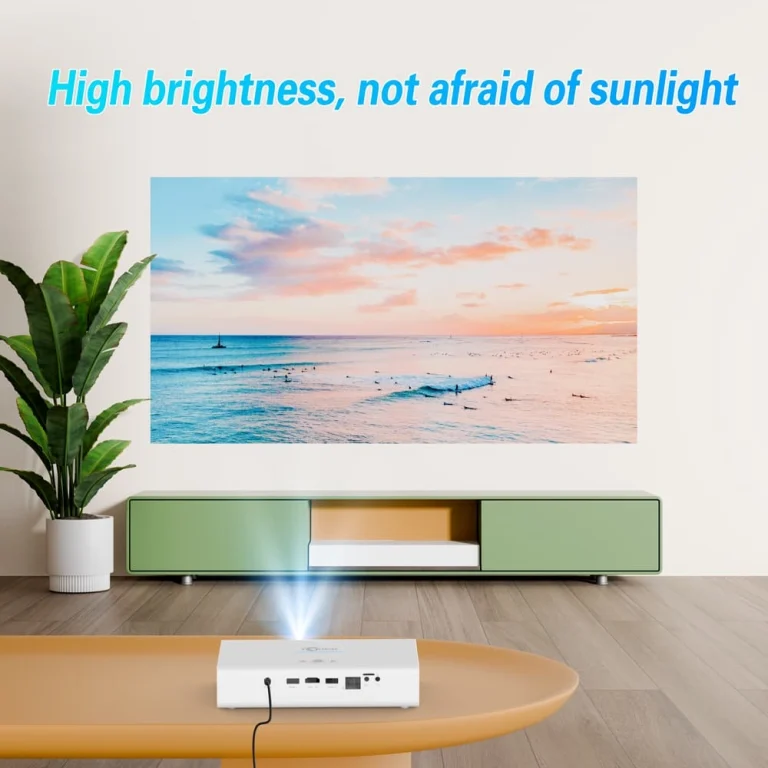DLP, LCD, or Laser: Which Projector Is Better?
Display technology has a huge impact on the quality of the image and general performance or experience, so identifying the right projector is clearly important. There are three preferred options available at present; they are DLP, (Digital Light Processing), LCD, (Liquid Crystal Display) and Laser. Each technology brings its advantages and disadvantages – sharper detail, brighter colours, longer lifespan, etc. For example, DLP projectors are designed to be a compact and get smooth video playback, LCD projectors provide colour richness at a lower cost, and laser projectors are exceptionally bright and will likely last considerably longer. So what is the best option for home theatre, corporate projector, or a portable option? In this guide I will break each one down DLP, LCD, and Laser for you side by side with the hope of allowing you to select correctly.
What is a DLP Projector?
In general terms, a DLP projector has a tiny but powerful chip called a DMD, or Digital Micromirror Device. You can think of DMDs as a grid of millions of tiny mirrors—specifically 1.3 million or more, depending on the model. They are so small you need a microscope to see them, but they are also the reason DLP projectors are so common for certain applications.
Most DLP projectors use this DMD chip along with an LED or regular bulb light source.
How It Works
When you activate a DLP projector, the light source (either an LED or bulb) emits light toward the DMD chip. Each tiny mirror on the DMD chip flips extremely quickly—thousands of times per second—between two positions: reflecting light toward the screen and reflecting it away (usually into a heat sink). These ons and offs represent tiny dots of light (pixels) that create your image. For color, many DLP projectors have a “color wheel,” also known as the spinning color wheel, which is a spinning disc with red, green, blue, and even sometimes white segments that sits between the light source and the DMD chip. The wheel must spin in time with the mirror, which means the mirror must point to the correct light segment before it reflects light toward the screen in order to fuse the segments together and produce full-color images.
DLP Projectors – Pros:
- You can take your DLP projectors anywhere you want – they are small and easy to carry for work or play.
- DLP projectors offer the best contrast for home theaters, meaning deeper blacks that make a movie come to life.
- DLP projectors give you a clean image that does not have a grid so small print and fine detail are sharper and easier to sell.
DLP Projectors – Cons:
- DLP projectors may create a rainbow effect to certain people so it is good to test if you are light sensitive in any way.
- DLP projectors look good in a dark room but might wash out in bright, sunny areas.
- DLP projectors may have slightly inaccurate colors and be less desirable for work in which color is important, such as photo editing or design.
What is an LCD Projector?
How Does it Work?
Pros of DLP Projectors:
- Bulky and Heavy: LCD projectors require three panels as opposed to a single chip, making them large and heavy. If you are looking for a portable projector for travel or camping, LCD is not the best option.
- DLP projectors offer the best contrast for home theaters, with deep blacks that bring movies to life.
- DLP projectors deliver smooth, grid-free images, making text and fine details crystal clear.
Cons of DLP Projectors:
- Some users may notice a rainbow effect on DLP projectors, so test for light sensitivity before buying.
- Lower Contrast Than DLP: LCD projectors have difficulties rendering deep blacks due to light leaking through, which results in a grey-ish shade on dark movie scenes. This is fine for casual viewing with friends, but for home theater enthusiasts, DLP may be the way to go.
- Color Combination & Projection: After each LCD panel has worked on the color, the beams combine into one full-color image. The prism is what successfully blends the light and detail, and is then followed by the lens to deliver bright true to life color on the screen.
What is a Laser Projector?
How Does it Work?
Pros of Laser Projectors
- Laser projectors have exceptional performance.,With their extra brightness (5,000-10,000 lumens), they are great for outdoor uses, bright rooms, and large spaces.
- Most options are great because they require very little maintenance, laser diodes last 20,000-30,000 hours, far longer than any bulbed or LED wear and tear, thus saving time and cost on replacements. Powering up and powering off is instant—unlike bulbed projectors which need warm-up time.
- Some laser DLP models do not experience rainbow effect inducing unsightliness for viewers, making for a more comfortable experience for sensitive eyes.
Cons of Laser Projectors
- The biggest disadvantage is price! Most folks are looking at 1,000 starting price point to 5,000 plus for a premium projector. If you can swing the costs, that’s great!The biggest disadvantage is price! Most folks are looking at5,000 plus for a premium projector. If you can swing the costs, that’s great!
- Another disadvantage is size and weight, compared to the laser LED project, they tend to be bulkier for the extra cooling needed and portability varies greatly.
- Some users experience what appears to be a speckle effect on a flat wall. Usually a proper projector screen will eliminate the issue.
Differences Between LCD, Laser, and DLP Projectors
|
Feature
|
DLP Projector
|
LCD Projector
|
Laser Projector (DLP/LCD)
|
|
Core Tech
|
DMD chip (mirrors) + LED/bulb
|
3LCD panels (transmissive) + LED/bulb
|
Laser diode + DMD/LCD
|
|
Brightness (Lumens)
|
2,000-4,000
|
3,500-5,000
|
5,000-10,000
|
|
Color Accuracy
|
Good (minor 偏差)
|
Excellent (true-to-life)
|
Excellent (saturated)
|
|
Contrast
|
High (deep blacks)
|
Medium (gray blacks)
|
High (if laser DLP) / Medium (if laser LCD)
|
|
Portability
|
Very light (1-3 lbs)
|
Heavy (5-8 lbs)
|
Heavy (4-8 lbs) / Rare portable options
|
|
Lifespan
|
5,000 (bulb)–15,000 (LED) hours
|
5,000 (bulb)–20,000 (LED) hours
|
20,000–30,000 hours
|
|
Rainbow Effect
|
Possible (10-15% of users)
|
None
|
None
|
|
Price Range
|
300–2,000
|
500–3,000
|
1,000–5,000+
|
|
Best For
|
Portability, home theater, 3D
|
Color work, classrooms, bright rooms
|
Outdoor use, offices, long-term setups
|
Spotlight on Toumei DLP Projectors
- Ultra-Portable:The Toumei DLP projector is only 1.2 lbs (the size of a coffee mug), and ready to travel. Toss it in your bag, and set up on a backyard lawn chair to watch a movie in a matter of minutes. Perfect for camping, students, and small living spaces.
- GTV & KTV Ready:This projector comes preloaded with Google TV and KTV apps, and is designed for entertainment. For karaoke nights, just add a mic! With 5W speakers, you’ll get clear sound; or, connect via bluetooth to a soundbar for even larger sound.
- Built-In Battery:If you’re off the grid and don’t have access to power, no worries. With a system capable of 2–3 hours of play, you can pack up and move a little coastal, or monitor the neighbor’s cat. With a 5,000mAh power bank, you can power up anywhere by just charging via USB-C, just like your phone—outlet not required.
- Short-Throw Distance:Project up to 100 inches from 6 feet. Ideally suited for very short areas, like small apartments, student dorm rooms, or stuffy office spaces.


